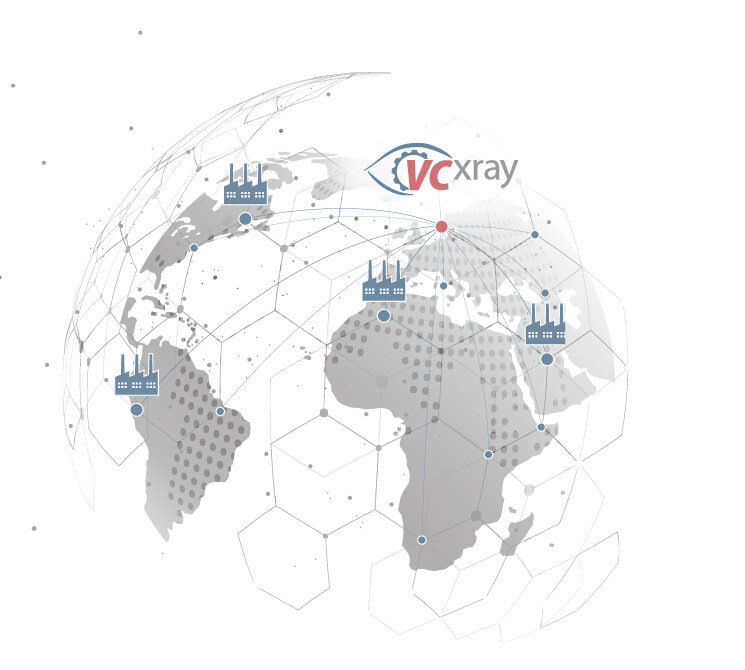
X-ray inspection systems for automotive
The automotive industry is an essential sector of the economy with great significance for modern society. It provides millions of jobs worldwide and contributes significantly to the gross domestic product of many countries. Through investments in research and development, it drives technological innovations, such as electric vehicles and autonomous driving. The industry is internationally connected and promotes trade and globalization. Cars are an integral part of modern lifestyles and influence mobility behavior. However, environmental impacts and the need for more sustainable mobility face challenges that the industry must address. Overall, the automotive industry remains a significant industry that influences many aspects of our lives.
The automotive industry is undergoing a profound transformation driven by several factors. Electrification is a major trend, with more and more automakers turning to electric vehicles to reduce environmental impact. Autonomous driving is being developed to improve traffic safety and efficiency. Connected vehicles offer new opportunities for navigation, entertainment and data-driven services. The industry is also responding to the increasing demand for sustainability and environmental awareness. This is leading to new business models and adaptation to regulatory requirements. Automotive manufacturers need to be agile to meet the challenges of this dynamic market environment.
The importance of materials testing in the automotive industry is increasing for several reasons. Vehicles must meet stringent safety standards to protect both occupants and other road users. Materials testing plays a critical role in ensuring the structural integrity and reliability of components used in safety-critical areas, such as bodywork, brakes, and steering systems. The automotive industry is striving to make vehicles lighter to reduce fuel consumption and lower environmental impact. Materials testing allows manufacturers to identify materials that are lighter yet strong enough to withstand the stresses of the vehicle. Innovation and cost savings are other benefits of materials testing, which allows manufacturers to meet the changing needs of the industry.
The use of X-ray technology and computed tomography (CT) for materials testing in the automotive industry has increased significantly in recent years. Both technologies offer advanced capabilities for non destructively inspecting and evaluating materials and components in automobiles.
The advantages of X-ray technology and CT in the automotive industry are many:
Overall, X-ray technology and CT are valuable tools for raising quality standards in the automotive industry, ensuring safety and driving innovation. They play a crucial role in the further development and optimization of materials and components for modern vehicles.
Materials testing and X-ray inspection in the automotive industry face challenges in terms of the diversity of materials, the size, and geometry of components, and the sensitivity and accuracy of test methods. Cost factors and complex interpretation of CT data are other challenges. Nevertheless, continuous advances in technology are being made to overcome these challenges and improve quality, safety, and efficiency in automotive production.
Millions of components are manufactured in the automotive industry, and testing must keep pace with the high production rate. The challenge is to optimize materials testing to meet the high throughput requirements without compromising on testing accuracy. Modern materials testing and X-ray systems can be costly. Due to high-cost pressures in the industry, the challenge for the automotive industry is to use efficient inspection solutions that offer both high performance and economic efficiency to avoid unnecessarily increasing production costs.
The automotive industry has strict norms and standards for quality assurance and vehicle safety. The challenge is to perform materials testing and X-ray inspection to meet applicable regulations and requirements. Therefore, it is highly recommended to have the design of a testing system reviewed by a specialized company before implementation. VCxray has a team of application specialists that can assist with implementation.
The quality control requirements of companies in the automotive industry vary widely and can be roughly divided into three categories:
Manufacturers producing lower volumes require manual systems for small batches or single inspections. Here, the ECO H-Series is the perfect system family for smaller components.
Medium-volume manufacturers need more automation for 2D inspection and may also need to regularly check the quality of new casting processes using computer tomography. In these cases, the ECO C or PRO C families may be perfectly suited if 2D production inspection can be supplemented with 3D as needed.
In the case of extremely high volumes, for example in series production in the automotive sector, high-performance inline systems with automatic evaluation are required. Using robot loading or integrated directly into the production line, the shortest cycle times can be achieved.
Choosing the right system can be complex, and a good decision must weigh many parameters such as size, speed, cost, etc. Contact our product specialists for further advice.
Contact us today
Improve the quality and safety of your components with our state-of-the-art X-ray systems and CT systems. Contact us today to learn more about our material inspection solutions. Our team is always available to answer your questions and develop a customized solution for your needs.
Contact our experts to talk about your projects and challenges


With our Service centers and Hubs worldwide,
we will complete your staff with maximum
efficiency in your specified time frame and
without interrupting your operations.
No matter where you are, we are never far away.
Our knowledge and experience
maximize your company‘s profits.